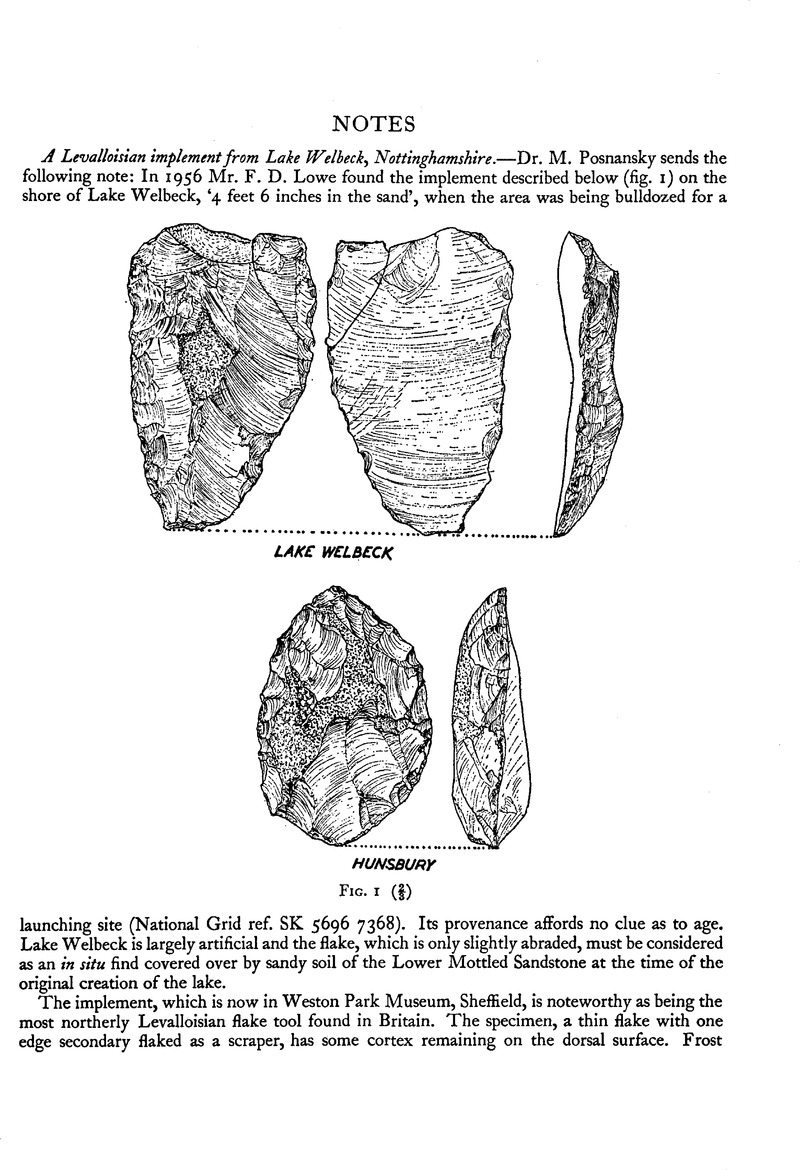No CrossRef data available.
Article contents
A Levalloisian implement from Lake Welbeck, Nottinghamshire
Published online by Cambridge University Press: 29 November 2011
Abstract

- Type
- Notes
- Information
- Copyright
- Copyright © The Society of Antiquaries of London 1958
References
page 86 note 1 Material in Northampton and Peterborough Museums.
page 86 note 2 Of the 40 hand axes from Woodston seen in Peterborough Museum only 4 are fresh, whilst of the 14 Levalloisian flakes only one (of Early Levalloisian fades) is rolled.
page 86 note 3 Hollingworth, S. E. and Taylor, J. H., 1946, Proc. Geol. Ass. lvii, 229–45.Google Scholar
page 86 note 4 Term proposed in forthcoming paper on ‘The Pleistocene Succession in the Middle Trent Basin’to cover deposits of chalky boulder clay of the Trent Basin.
page 87 note 1 In Wollaton Park Museum, Nottingham. A collection from Stoney Street gravel pit is now in the British Museum and was published by Smith, R. A., 1928, Antiq. Journ. viii, 91–93.Google Scholar
page 87 note 2 Goode, W. W., 1932, Antiq. Journ. xii, 306–7.Google Scholar Now in Leicester Museum.
page 87 note 3 Shotton, F. W., 1953, Phil. Trans. Roy. Soc. B, 237, p. 230.Google Scholar
page 87 note 4 Now in Northampton Museum (no. D331/54–5). An outer primary flake. Flaking angle 62°, most of the flaking secondary to the detachment of the flake. Resolved flaking round the edge, fine trimming round part of the lower edge. Patinated white, thinner patination on flake surface. Fresh. Length 3°05 in. (7°7 cm.), width 2°07 in. (5°2 cm.), maximum thickness 0°93 in. (2°4 cm.).
page 87 note 5 Burchell, J. P. T., 1931, Proc. Preh. Soc. East Anglia, vi, 262–5Google Scholar; Antiq. Journ. xi, 262–72; 1935, Geol. Mag. lxxii, 327–31. The fresher Clactonian material appears to be contemporary to the Estuarine shingle, which overlies the Cannon Shot gravel and boulder clay, which would seem to be a correlate of the Eastern Glaciation of the Midlands.
page 87 note 6 Lacaille, A. D., 1946, Antiq. Journ. xxvi, 180.CrossRefGoogle Scholar
page 87 note 7 Salmon by hand axe in private possession. In formation from Mr. F. T. Baker.




